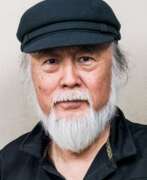Graphic artists Asia


Pacita Abad was a renowned Filipino artist, celebrated for her vibrant and colorful artwork that showcased her deep engagement with global cultures and social issues. Born in 1946 in Batanes, Philippines, into a politically active family, Abad's life took a significant turn when she decided to abandon her law studies in favor of art, influenced by her interactions and travels across the globe. This decision led her to explore various art forms and techniques, including trapunto painting—a method where canvases are stitched and padded to create a three-dimensional effect.
Abad's art was profoundly influenced by her extensive travels with her husband, Jack Garrity, through more than 60 countries, where she not only collected textiles but also immersed herself in local cultures. This exposure is vividly reflected in her works, which often incorporate traditional fabrics and objects, such as beads and shells, integrating them into her colorful abstract and figurative paintings.
Throughout her career, Abad's works were displayed in over 200 museums and galleries worldwide, including prestigious venues like Tate Modern and the Museum of Modern Art (MoMA) PS1. Her work not only celebrates the visual and cultural diversity she encountered but also addresses global and humanitarian issues, such as the plight of refugees, which she depicted through intimate and powerful portraits of women and children.
Pacita Abad's legacy continues to inspire and influence the art world, highlighting her role as an "ambassador of colors" whose works helped to "make the world smile" with their exuberance and vibrancy. If you're interested in learning more about her life and work, consider signing up for updates on exhibitions and sales related to her art. This will keep you informed about opportunities to engage with and perhaps collect pieces from the oeuvre of this groundbreaking artist.
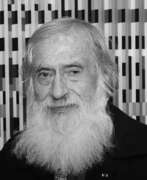

Yaacov Agam, an Israeli kinetic and optical artist born on May 11, 1928, is celebrated for revolutionizing the visual arts with his dynamic and interactive creations. Agam's pioneering work extends beyond traditional static art forms, inviting viewers into a transformative experience that changes with perspective and movement. His art, deeply rooted in his Jewish heritage and mysticism, eschews representational imagery for abstract, geometric forms and vibrant colors, engaging the observer's perception to complete the visual experience.
Notably, Agam's contributions to kinetic art have not only garnered him international acclaim but also led to his works commanding the highest prices among Israeli artists at auction. His innovative "Agamographs" use lenticular printing to create illusions of depth and motion, highlighting his fascination with the interplay between art, viewer, and the temporal dimension. Agam's significant exhibitions include retrospectives at the Musée National d'Art Moderne in Paris and the Guggenheim Museum in New York. His achievements are further recognized through multiple awards and the establishment of the Yaacov Agam Museum of Art in his hometown of Rishon LeZion, Israel, dedicated to his vision of art in motion.
For collectors and art and antiques experts, Agam's work represents a profound exploration of perception, time, and spirituality, offering a unique and engaging experience. His art invites us to see beyond the visible, reminding us of the ever-changing nature of reality and our active role in its perception. To stay updated on new product sales and auction events related to Yaacov Agam, sign up for updates and immerse yourself in the dynamic world of one of the most influential modern artists.
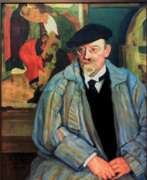

Ivan Semyonovich Kazakov (Russian: Иван Семёнович Казаков) was a Russian painter and graphic artist, known for his contributions to Orientalist art. Born on February 1, 1873, in Kasilova, Oryol Governorate, Kazakov studied at the Moscow School of Painting, Sculpture, and Architecture, and later at the Imperial Academy of Arts under the mentorship of Vladimir Makovsky.
Kazakov's work is notable for its vibrant depictions of Central Asian architecture and landscapes, particularly those of Samarkand, Bukhara, and Tashkent. His paintings often feature detailed portrayals of domes, minarets, and intricate patterns, capturing the essence of these historic cities. This unique focus on Orientalist themes distinguished him from his contemporaries and earned him a prominent place in Russian art history.
Throughout his career, Kazakov exhibited his works in significant venues in Saint Petersburg and Moscow. He also played a crucial role in the art community of Tashkent, where he taught and established his own studio. Several of his works are preserved in museums, including the State Russian Museum and regional art collections, which continue to attract art enthusiasts and collectors.
For updates on new works and auction events related to Ivan Semyonovich Kazakov, sign up for our exclusive alerts. Stay informed about the latest opportunities to acquire pieces by this remarkable artist.
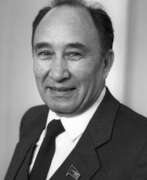

Izzat Klychev (Russian: Иззат Назарович Клычев) was a prominent figure in Turkmen and Soviet art, widely celebrated for his significant contributions to the realm of fine arts. Born on October 10, 1923, in Turkmenistan, Klychev was not only an esteemed painter but also a notable public figure who played a crucial role in nurturing several generations of Turkmen artists. His works, which often focused on the daily lives of people, the beauty of Turkmenistan, and its cultural heritage, received recognition for their vibrant colors and expressive storytelling. Klychev's artistic journey was marked by his innovative use of color and his ability to capture the spirit of his times, blending national and international themes.
Klychev's portfolio includes a broad spectrum of subjects, from landscapes and still lifes to portraits and historical themes, showcasing his versatility as an artist. Notably, his series "My Turkmenistan" earned him the USSR State Prize in 1967, highlighting his profound impact on Soviet and Turkmen art. His style, characterized by a harmonious perception of diverse cultures, was recognized and praised internationally. Klychev's paintings have been exhibited worldwide, in countries ranging from the USA to Japan, and are part of collections in prestigious museums, including the State Tretyakov Gallery and the State Museum of Oriental Art in Moscow.
Beyond his artistic achievements, Klychev's legacy includes his charitable activities and his leadership within the Artists Union of Turkmenistan, where he actively supported young artists and contributed to the formation of an artistic community known as "The Seven". His commitment to art education and his role as a mentor to future generations underscored his dedication to the cultural and artistic development of Turkmenistan.
In summary, Izzat Klychev stands out as a figure who not only enriched Soviet and Turkmen art with his creative vision but also played a pivotal role in shaping the artistic landscape of his country, leaving a lasting legacy that continues to inspire. His life's work reflects a deep connection to his heritage and a broad engagement with the world, making him a key figure in the history of 20th-century art.
For those interested in the history of art and cultural heritage, Klychev's contributions represent an essential chapter in understanding the evolution of Soviet and Turkmen artistic expressions. Collectors and experts in art and antiques are encouraged to explore his works further and sign up for updates related to Izzat Klychev, ensuring they stay informed about new sales and auction events featuring his remarkable creations.
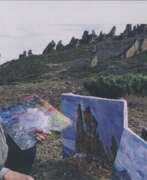

Afanasy Nikolaevich Osipov (Russian: Афанасий Николаевич Осипов) was a distinguished Soviet, Russian, and Yakut artist, celebrated for his profound contributions to genre painting, landscape art, and portraiture, focusing predominantly on the life and culture of the peoples of Yakutia. Born on February 28, 1928, in the Yakut ASSR, Soviet Union, Osipov's artistic journey was marked by his studies at the prestigious Moscow Art Institute named after V.I. Surikov from 1949 to 1955, where he honed his skills under renowned masters.
Osipov's career was characterized by a deep commitment to depicting the contemporary life of Yakutia, blending genre and portrait painting with a decorative planar approach. His notable works, such as the triptych "Gray Vilyuy" and "The Construction of Houses in the Nasleg Myth," are celebrated for their vivid portrayal of Yakut life, earning him the Order of the Red Banner of Labour and other prestigious honors including People's Artist of the USSR, Honored Artist of the RSFSR, and laureate of the State Prize of the RSFSR. S.I. Repin.
Throughout his career, Osipov was a significant figure in the art community, serving as a member of the Union of Artists of the USSR and holding prominent positions such as the chairman of the Union of Artists of Yakutia. His influence extended beyond the Soviet Union; he was recognized internationally as a full member of the National Academy of Arts of the Kyrgyz Republic. Osipov's legacy includes not only his artworks but also his role as an educator, shaping future generations of artists in Yakutia and Russia until his passing on September 11, 2017, in Yakutsk, Russia.
Afanasy Nikolaevich Osipov's art captures the spirit and culture of Yakutia, making his works invaluable to collectors and art enthusiasts interested in the rich tapestry of Soviet and Russian art. For those keen on exploring Osipov's contributions to the world of art and possibly acquiring pieces of his work, signing up for updates related to Afanasy Nikolaevich Osipov can ensure you are informed about new sales and auction events showcasing his remarkable legacy.


